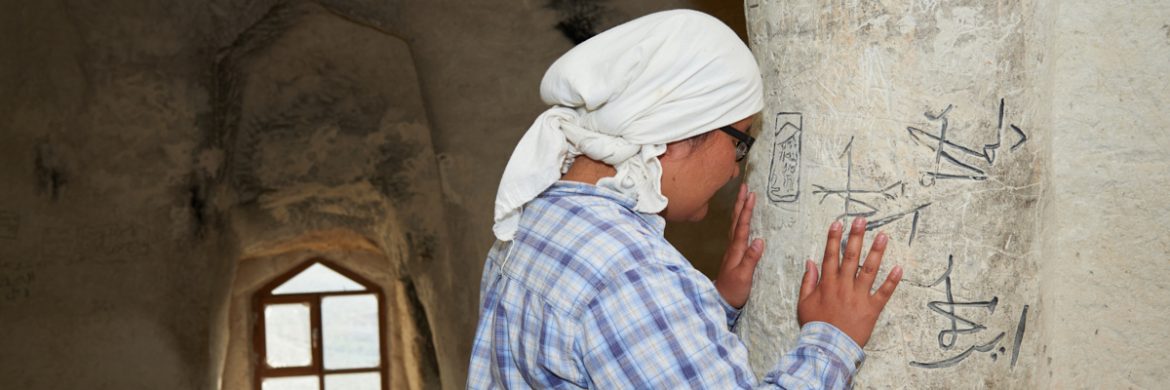Shakpak Ata is one of the three hundred and sixty-two saints of Mangystau, and its underground mosque is a place of worship, representing an example of historical architecture. This monument is unique in the Aral-Caspian region, with walls adorned with inscriptions and drawings.
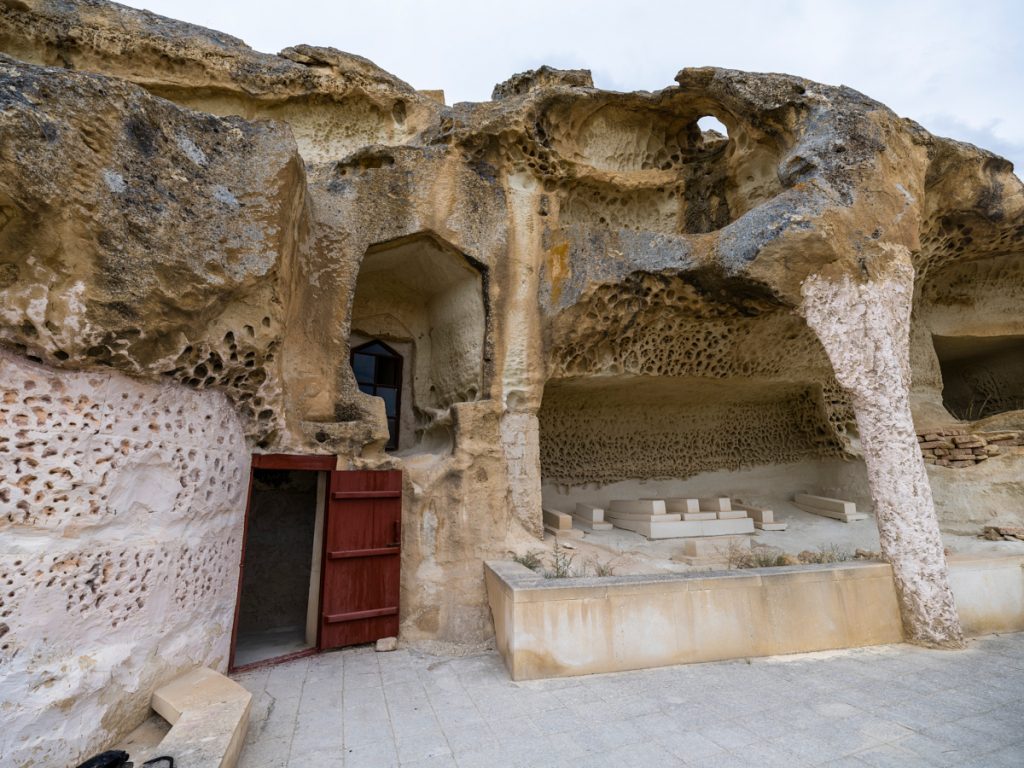
The Shakpak Ata Mosque was skillfully carved into a layer of mountain limestone. Judging by the characteristics of the location where this mosque is built and the grooves in the rock, it appears to have been at the bottom of the Tethys Ocean in the past. Scientists date the construction of the mosque to the 9th-14th centuries. While the actual period of Shakpak Ata’s life, who achieved the status of a saint through profound knowledge, remains unknown, we can witness his great art today through his underground mosque and folk tales.
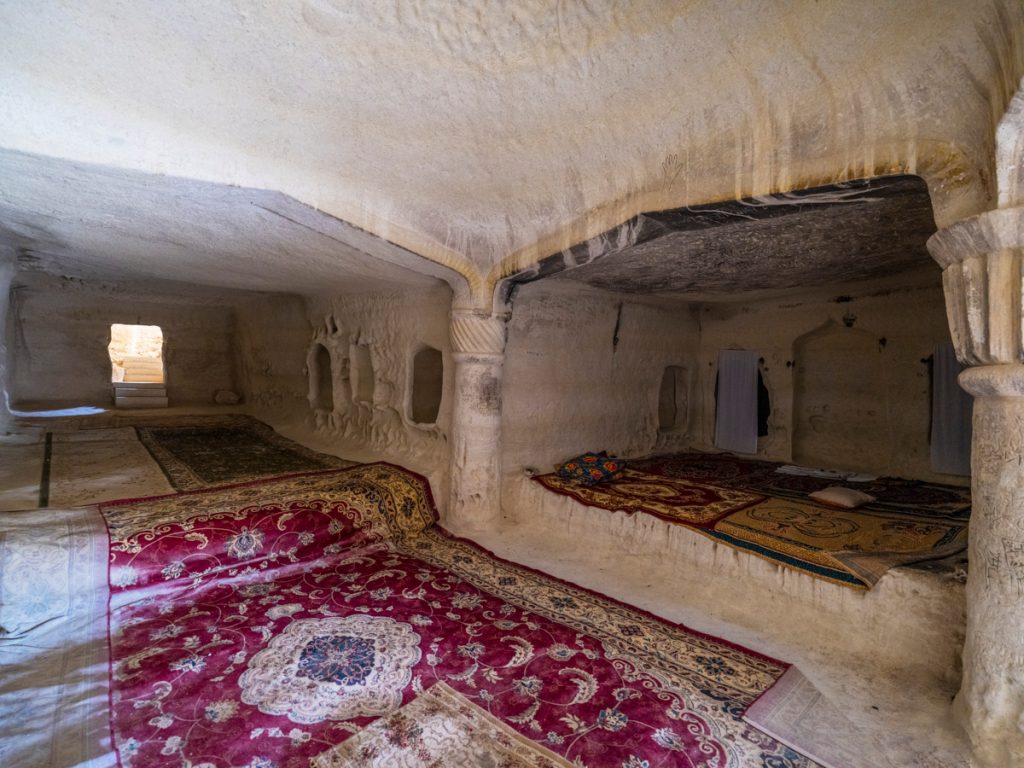
The construction technique of this four-room stone mosque differs from that of other buildings of its kind. The interior of the mosque, crafted as an artificial cave within the rock, extends from the central hall in multiple directions: north, south, west, and east. The interior and doors of the mosque are intricately decorated, with patterns painted using durable pigments. The central hall is adorned with a spherical dome resembling rock layers and connected to columns by upper layers. Decorative signatures are visible on the arches, and a well-like opening is cut into the stone roof of the dome. An architectural structure with four arches is built atop a light recess on the outer surface. The main entrance of the mosque takes the form of a triangular arch. Adjacent to the front door, holes were dug into the ground for the storage of numerous burial remains.
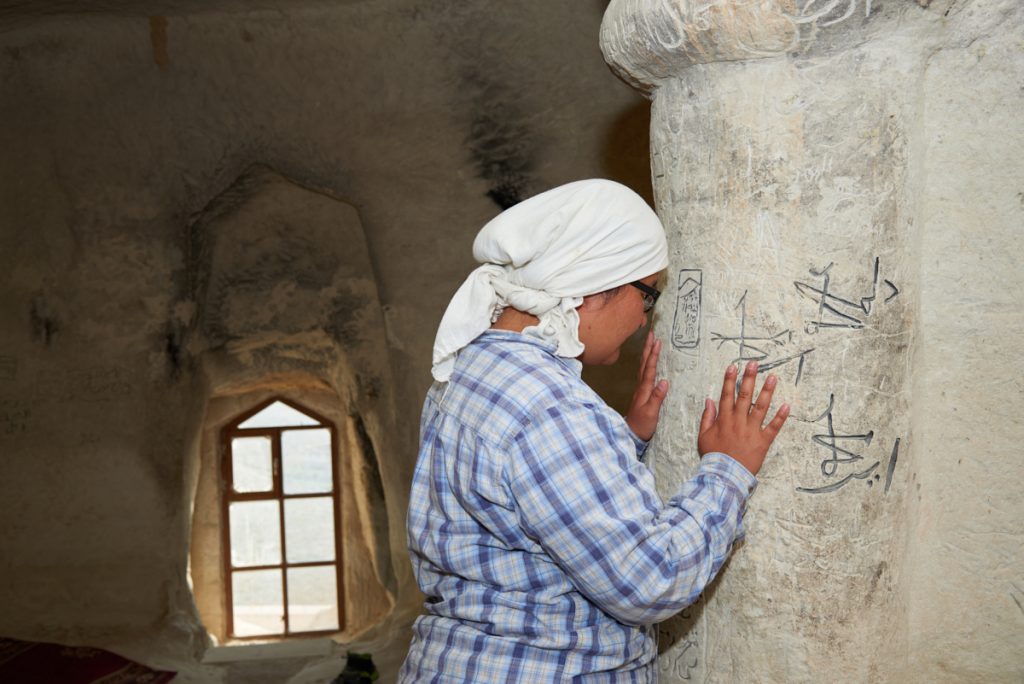
Around 250 Arabic inscriptions and images grace the walls of the mosque. Among these inscriptions is a Sufi poem that reflects on the fragility and brevity of life. The century and authorship of these verses engraved on the wall remain unknown. However, it is also possible that some of the poems were composed by Shakpak Ata himself.
Wall paintings often feature the image of a human palm. Similar depictions can be found in the monuments of Kangy Baba and Sultan Upi. Despite the various theories surrounding the meaning of this symbol, which is frequently encountered in Sufi culture, certainty remains elusive. Additionally, the walls are adorned with images of horsemen, animals, lotus flowers, and weapons.
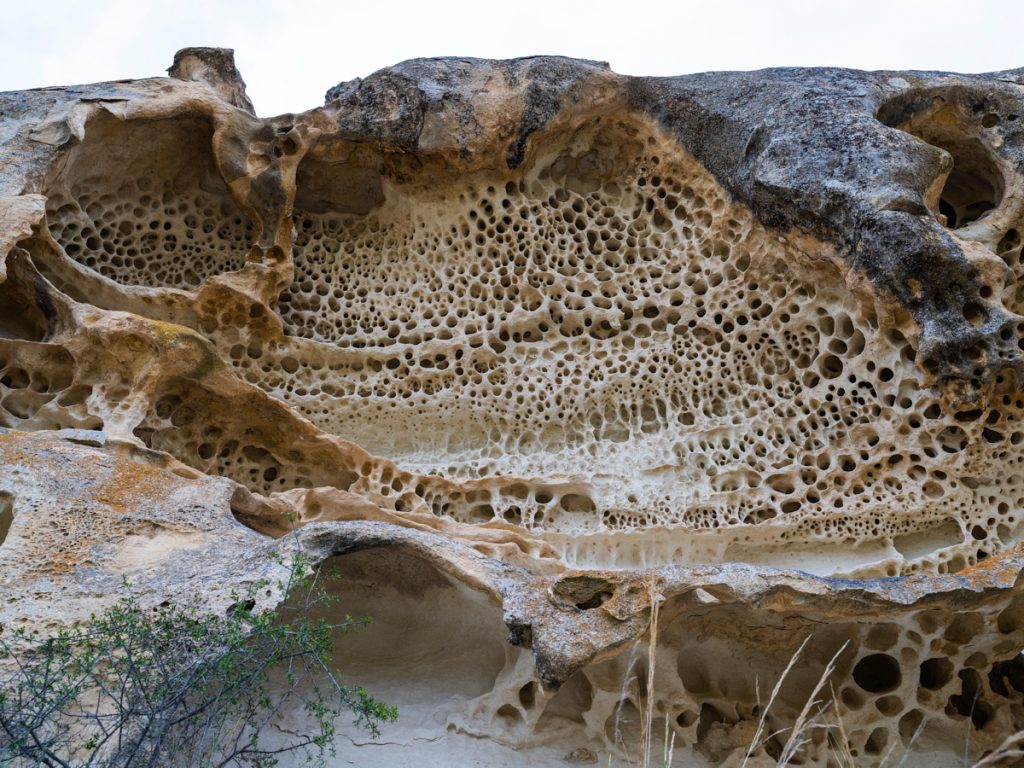
Renowned geomorphologist Serikbol Kondybay, who delved into the history and traditions of Mangystau, writes that in mythology, Shakpak Ata is regarded as the lord of snakes and the patron of the dead. He is the grandson of Shopan Ata, and his real name is Shahmardan. The moniker ‘Shakpak’ (literally means “flint”) was bestowed upon him due to fiery sparks emanating from his weapons during battles. Legend has it that when he needed fire, he simply touched one fingernail to the other, generating sparks. Revered among the people, he was known for his ability to conjure fire from stones, scorching his enemies. In another legend, Ata once passed by a village and witnessed a husband mistreating his wife, stemming from the absence of children in their family. Shakpak Ata promptly defended the distressed woman. Whether due to gratitude or a determination to no longer endure her husband’s abuse, she followed Shakpak Ata. In the barren field where they halted, springs burst forth from the ground, rain poured, and life flourished anew. It’s said that thereafter, people from all corners of the world started coming here in search of solutions to their problems.
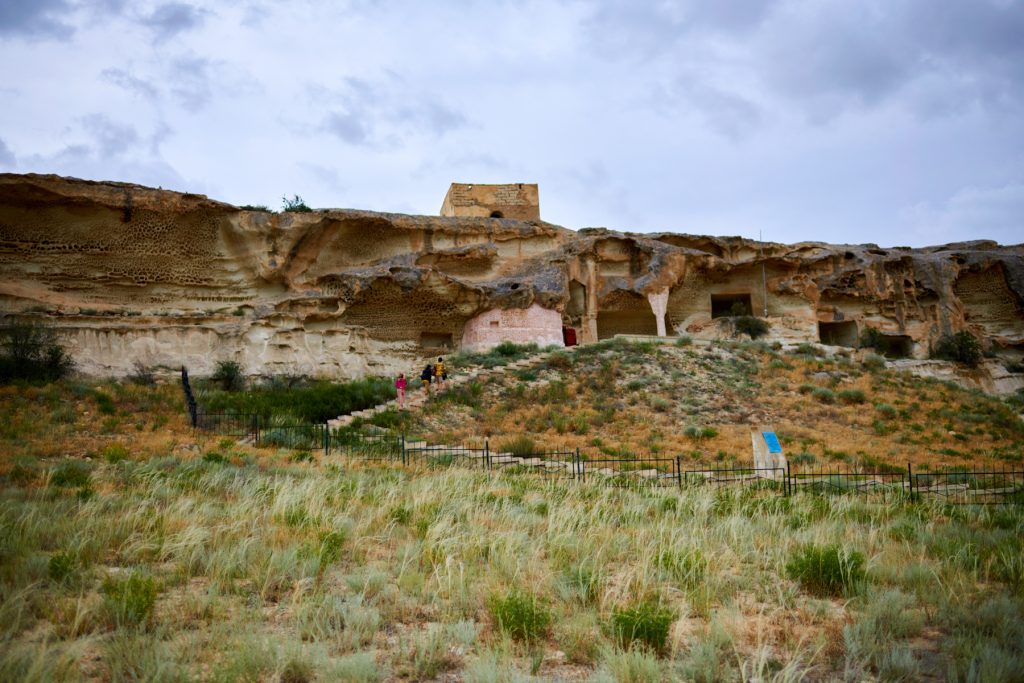
The Shakpak Ata necropolisrests 30 kilometers northwest of Taushyk village, in the Tupkaragan district. Therefore, if you’re embarking on a journey from Aktau, you must initially cover about 90 kilometers to reach Taushyk village. Every year, tourists from both the country and abroad flock to this remarkable historical site, which is included in the state list of historically and culturally significant monuments. The distinctive architecture of the mosque and the complex, the array of inscriptions, and the beauty of the limestone terrain on which the complex is situated constitute the primary allure of this destination.



